Pidurangala Cave Temple
Pidurangala cave temple, a Buddhist temple hidden in the lush green forest that invokes the earlier, less-discovered days of the historical city of Sigiriya, gives plenty of hope to the Indiana Jones in all of us.
Sigiriya rock fortress
Sigiriya rock fortress, the iconic tourist attraction in Sri Lanka’s cultural triangle, has become one of the world’s tourism darlings over the last few decades. Popular Mechanics, the American magazine listed the garden of Sigiriya amongst its “World’s 18 strangest gardens”. This 5th-century tourist hot spot outmuscling luminaries such as London, Prague, and Istanbul.
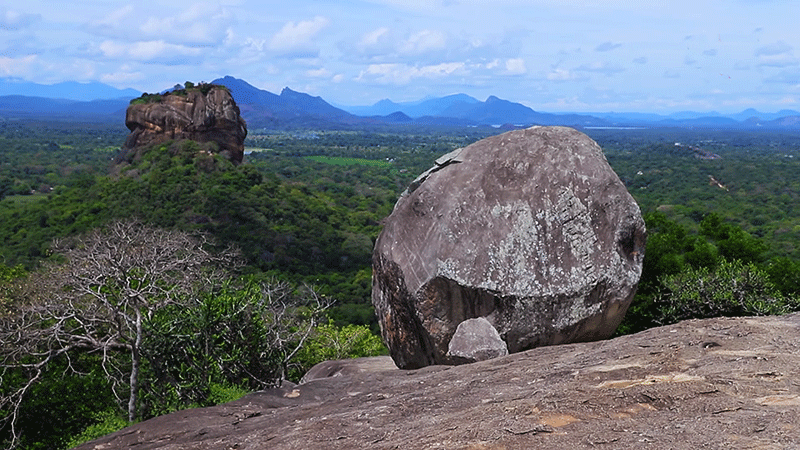
Travellers gathering in many thousands every day to Sigiriya rock fortress, A large part of the visitors are foreign travellers. But the busloads of tourist arriving at Sigiriya rock fortress miss another historical jewel, which lies few hundred meters away from the rock. Its unpopularity is largely attributed to the poor infrastructure, the unpaved road cannot cope with the crowd and it can barely accommodate a small vehicle.
Pidurangala is still unknown to many travellers
Despite the hordes of tourists at Sigiriya rock fortress, Pidurangala cave temple still remains as an off the beaten track tourist place. Pidurangala cave temple, a Buddhist temple hidden in the lush green forest that invokes the earlier, less-discovered days of the historical city of Sigiriya, gives plenty of hope to the Indiana Jones in all of us.
Sigiriya is part of most Sri Lanka trip package, due to the iconic tourist site, Sigiriya rock fortress. Visiting Sigiriya rock is a priority for most tourist in Sri Lanka and it is included on most trip packages like 5 days Sri Lanka tour.
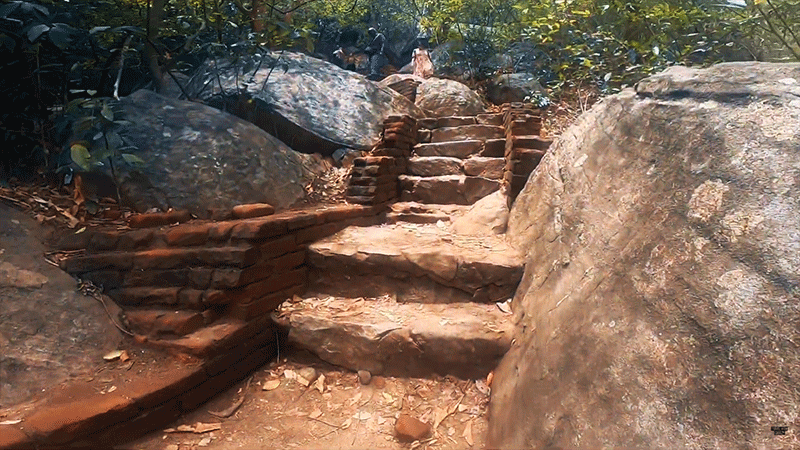
Where is Pidurangal temple
Pidurangala cave temple, that lies 2km from the Sigiriya rock fortress, is occupied by a group of monks. But it is considered as a part of the Sigiriya archaeological site and therefore the depart of archaeology also keep a close eye on this temple in the jungle. However, the visitors need to purchase a separate entrance ticket to visit the temple. The entrance fee is US$5, which is a bargain compared to the US$30 asked for the entrance to Sigiriya rock fortress.
Unlike its counterpart Sigiriya rock fortress, the tourists do not encounter hordes of travellers here. Therefore, a long line of tourist vehicles, coaches, tuk tuks is not a common sight here. However, there is an exception on every full moon day, which is a holiday in Sri Lanka and a large number of Buddhist going to the temple to take part in religious observances.
Surrounding of Pidurangal temple
The temple is surrounded by a forested area and a number of houses in the immediate surrounding areas does not exceed many dozens. A large part of the surrounding areas is hidden in the thick forest and wild elephants living in the jungle show up time to time in the village, especially after the sunset, in search of food and water.
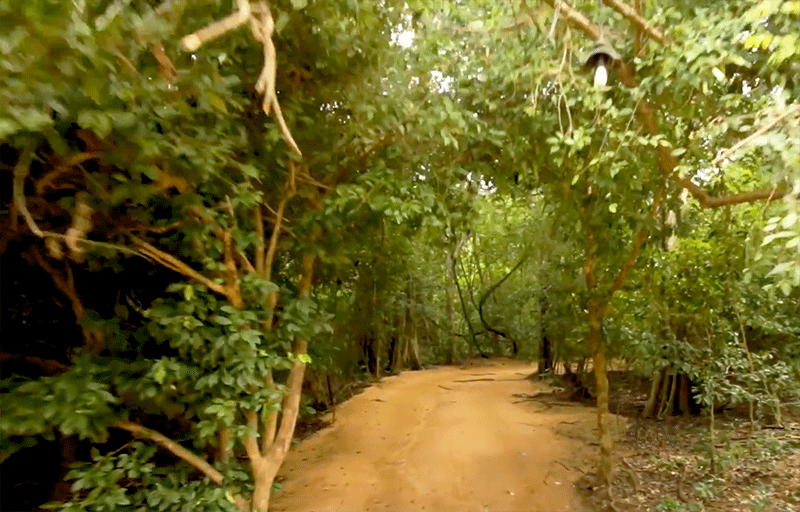
Be aware of wild elephants
Tragic incidents that involved with wild elephants are taking places here more often than other areas in Sri Lanka. The elephant attacks cause heavy damage to the properties of the people in the villages and the elephant unleash fatal injuries on people sometimes. The other side of the Elephant-human conflict is the killing of wild elephants by farmers due to the crop-damage and life-threatening incidents.
The way to the Pidurangal temple
The temple can be accessed via potholed, dusty, eroded road and there can be miniature ravines in the middle of the road, especially during the rainy season, which marks the flow of rainwater. Heavy sudden downpours are common in Sigiriya, during the monsoon season. However, Sigiriya gets much of its rainfall during the north-west monsoon, for a short period, about 3 months, during which heavy rain is very common here. The roads can be impassable during the rain.
This road is not paved for many years and the potholes on the dusty roads intact, over the last few decades. Right after the heavy rain, it is very difficult to travel on this road as the potholes get wider and deeper until the villagers mend the road by filling up the potholes. Whether you travel by car or a Tuk Tuk the journey going to be very bumpy.
The route passes men in sarong (the traditional dress of Sri Lankan men) paddling their foot bikes. Some people are travelling on tractors, which is another ideal vehicle to traverse through on this rugged terrain.
Visiting Pidurangala temple on a package tour
Some tour operators now include Pidurangala cave temple on their Sri Lanka tour itineraries along with Sigiriya rock fortress. I believe it is a good idea because Pidurangala temple is a religious site and one of the best places to experience to the spiritual side of Sri Lankan Buddhist life.
In Sigiriya rock fortress the visitors can see the ruins of many ancient structures such as audience hall, palace, swimming pool etc. All of them served the king and his retinue.
If you are visiting Sigiriya rock fortress it is well worth of investing a bit of time to go to the cave temple. It is just a 10 minutes journey from the rock to the temple. It might take around 30 minutes to explore the temple located in natural caves.
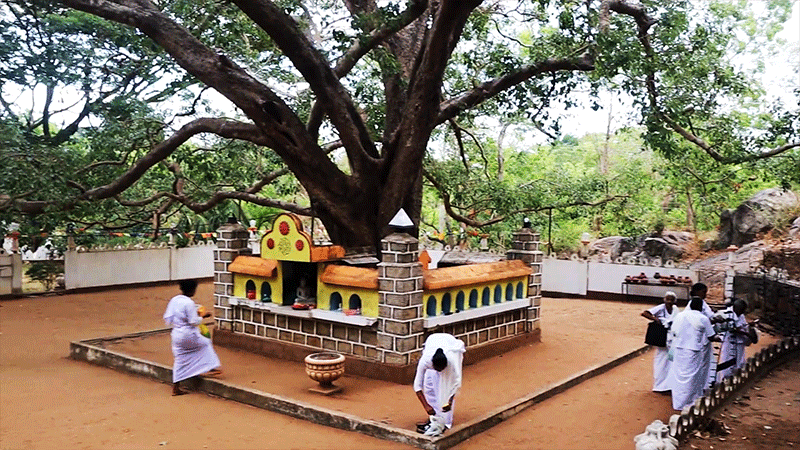
What to see in Pidurangal temple
Comparing to Sigiriya rock fortress, Pidurangala temple is built on a totally different architecture. The boulders and natural granite caves make much of the temple complex. Hundreds of large granite boulders are scattered in the temple ground, which spreads over many hectares. When visitors climb the mountain, they have to make it through the rocks, boulders, trees and narrow alleys.
The main image house, that can be visible, immediately after entering the temple premises, houses many Buddha statues and paintings. The image house is built such a way that, only the front wall had been installed in order to make an enclosed room. There are few other rooms in the temple, in order to accommodate buddha statues, paintings and monks.
History of Pidurangala temple
The history of the temple is also going back to 5th century AD (same as Sigiriya rock fortress), which makes the temple more than 1500 years old. The temple had been built under the guidance of King Kashyapa.
Some archaeologists presume that the site of Sigiriya rock had been a Buddhist hermitage, where many dozens of monks lived. When King Kashyapa decided to build his palace complex, the monks had to vacate the rocky outcrop. And the monks were accommodated at the Pidurangala temple with the patronage of the King. The king built the temple and made it the official temple of the rock fortress, and supported the monks until his demise.
Many Buddha statues and partly damaged stupa are to be found at the ground level of the temple. A large number of paintings and carvings with Buddhist motifs also can be found here. But only a few other evidence of religion- or any inscription discovered at the site, which gives away to determine when it was exactly built and by whom.
Despite all of this, Pidurangala cave temple is a special place in the cultural triangle of Sri Lanka. It is consisting of image houses, living quarters for monks, Buddha statues, paintings, stupa and dagoba.
The temple is consisting of 2 parts, the first part of the temple is located at the foothills of Pidurangala mountain and the second part of the temple is located on the Pidurangala mountain. The visitors can witness a partly finished Buddha statues on the mountain, which is at about 500 meters above the surrounding area. The visitors need to climb the mountain to witness the sleeping Buddha statues, which is 14 meters in length.
Despite its antiquity, a large part of the temple is still in very good shape. Stupa or dagoba, however, is not spared from the wrath of nature. Instead of the whitewashed dagoba, the visitors can witness a partly damaged semi-circular building, which is covered with moss, every pore and crumbling blocks are hidden in lush, ultra-verdant plants.
But this haunted look is an attraction to the temple, it shows the antiquity of the temple, which is not encountered often in tourist places. I had been to this temple many times in the past, I had seen the resident monks climb the stupa and remove the moss and tiny plants, little by little carefully, as to minimize the damage to the crumbling stones. However, you can’t eliminate moss forever, with the present condition of the dagoba because the stones are naked, they are fully exposed to the sun, wind and rain. Creating a plaster is the best way to rescue decaying stones, but it will be a costly affair.
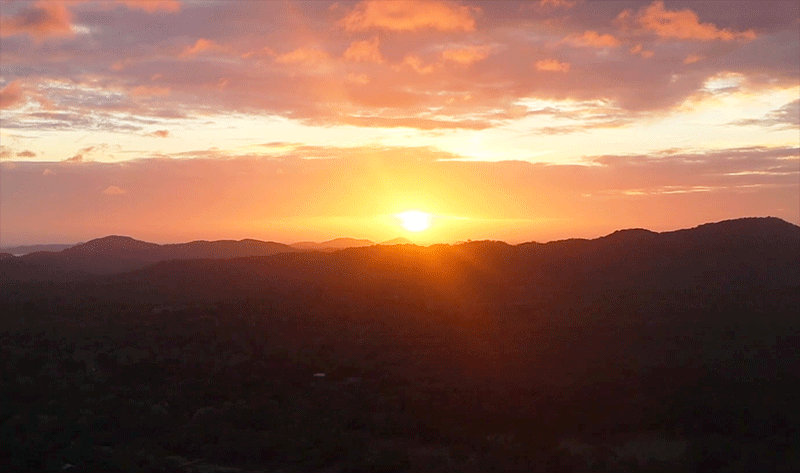
Sunrise from the Pidurangala mountain
Piduranbgala has become a popular place to witness the sunrise recently similar to Adams peak. A large number of travellers arrive at the site at around 6.00 AM in order to witness the sunrise. Adams peak, which is the third highest mountain in Sri Lanka that rises 2300 meter above sea level, is the most popular place on the island to see the sunrise. Adams peak is also a pilgrimage site with an ancient temple.
Best time to visit Pidurangala temple
Unlike Sigiriya rock fortress, where it is recommended to visit early morning or evening, in order to evade the sun, you will not feel the heat at the temple, due to the green canopy above your head. Most of all facts are located within the natural cave means you are not exposed to the sun.
Wear comfortable shoes when visiting Pidurangal temple
It is recommended to wear comfortable shoes if you are hoping to climb the mountain, in order to witness the big Buddha statue. The well-maintained footpath takes you through the lush green vegetation, however, it is a steep climb. The view from the top of the mountain is remarkable and take every visitor by surprise. For me, it is the most striking part of the trip to Pidurangala temple.
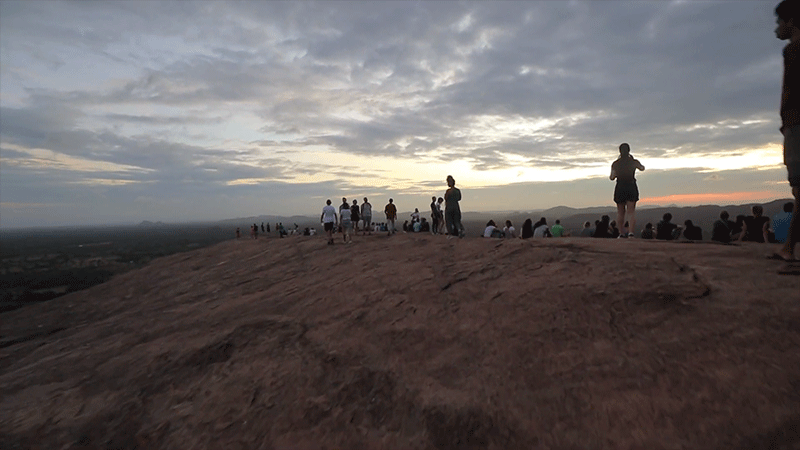
The view from the Pidurangal rock
The impressive view from the mountain top is similar to the birds-eye view that can be captured from the top of the Sigiriya rock. Both sights share the same landscape, lakes, vegetation and a part of the Minneriya wildlife reserve. There are local guides at the Sigiriya rock fortress, helping the foreign travellers with the climb and share the historical facts about the site. But you do not meet them at Pidurangala temple. You have to make everything your own and perhaps a resident monk might help you with the information.

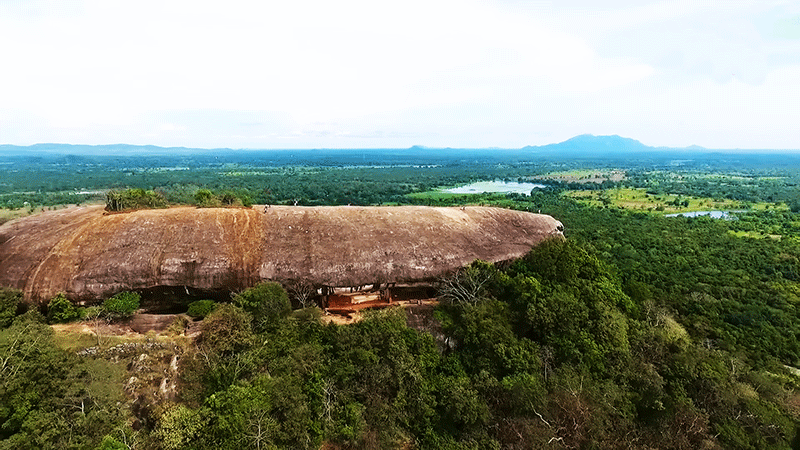





Good writing, we travellers to Sigiriya on our trip to sri Lanka. Our guide (name not remember to em) suggested a visit to this temple even though it was not in our tour itinerary. I must say the temple is a wonderful and very peaceful temple. No crowd and we had enjoyed our visit a lot.